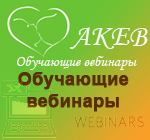| Antibacterial effect of human milk for common causes of paediatric conjunctivitis |

|

|

|
| Написал Руднева Ольга | |
| 07.02.2013 | |
Antibacterial effect of human milk for common causes of paediatric conjunctivitis.Br J Ophthalmol. 2012 Dec 25 Ken K Nischal1 and Sam Harding2 F1000 Ophthalmology 1 University of Pittsburgh Medical Center, USA. 2 Great Ormond Street Hospital for Children, London, UK. 24 Jan 2013 | Confirmation DOI: 10.3410/f.717970171.793468906 The properties of breast milk have been mentioned by Galen and the ancient Egyptians, and this small study looking at the use of breast milk as a cure for gonococcal ophthalmia neonatorum could have applications in developing countries. A total of 23 women aged 28-37 years attending routine outpatient visits gave samples of breast milk. Exclusion criteria were known immunodeficiency, systemic infection or antibiotic use within the previous two weeks. Samples were put onto agar plates containing reference strains of bacteria such as E. coli, Pseudomonas, Streptococcus and Staphylococcus. Two plates were inoculated with breast milk, and a plate of polymyxin B/trimethoprim was used as a control. Zones of inhibition were measured with callipers. Of the nine bacterial species tested, three were significantly inhibited by human milk relative to the negative control: Neisseria gonorrhoea, Moraxella catarrhalis and viridans group Streptococcus. Only N. gonorrhoea showed a greater zone of inhibition than the control. A large variety of bacteria were grown from milk, raising the risk of superinfection. The authors conclude that, while breast milk is unlikely to be effective against many species, N. gonorrohoea, a prominent cause of neonatal conjunctivitis in the developing world, may well be effectively dealt with by breast milk. Disclosures None declared |
| След. > |
|---|

